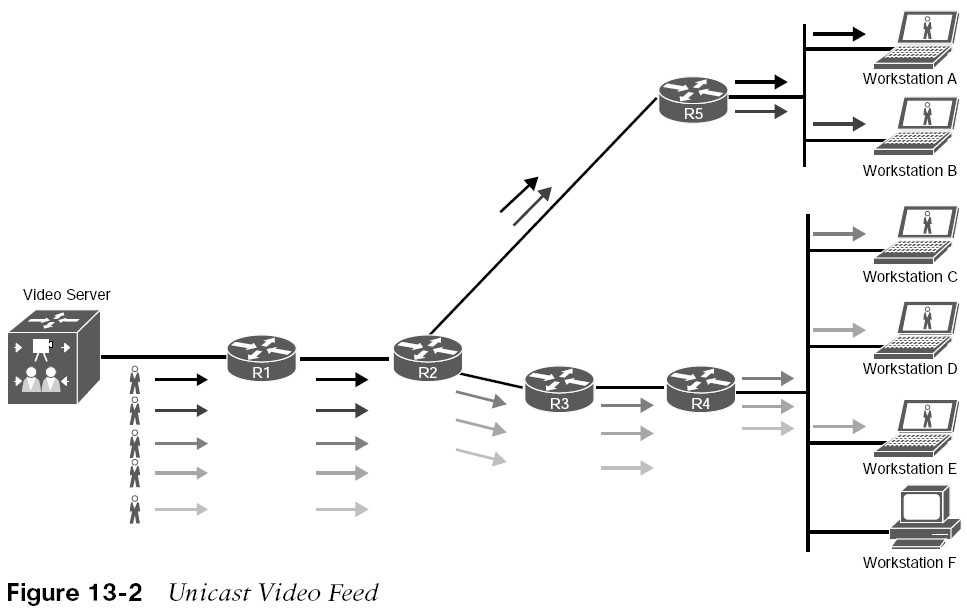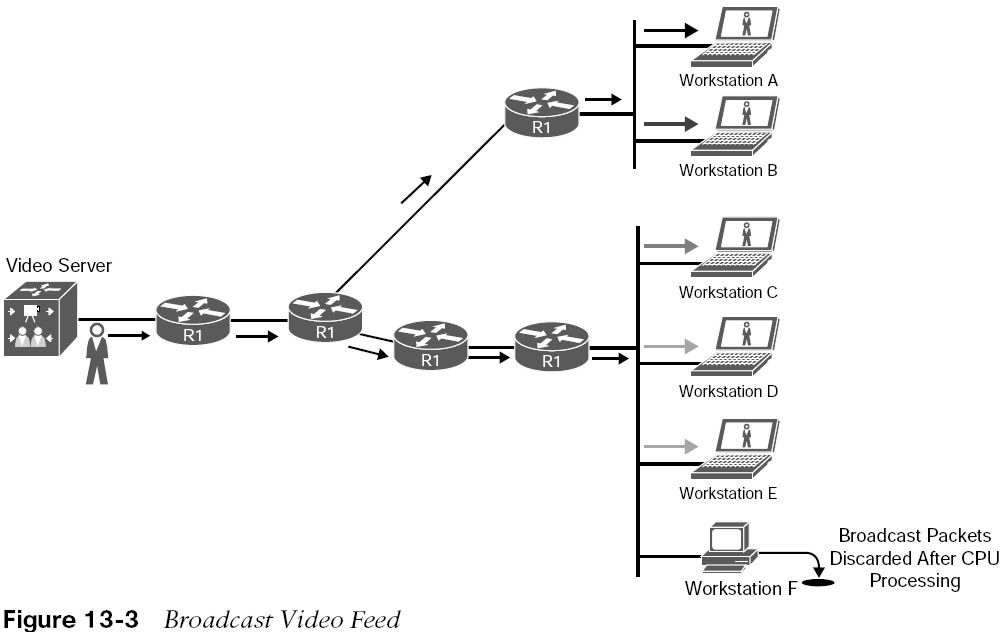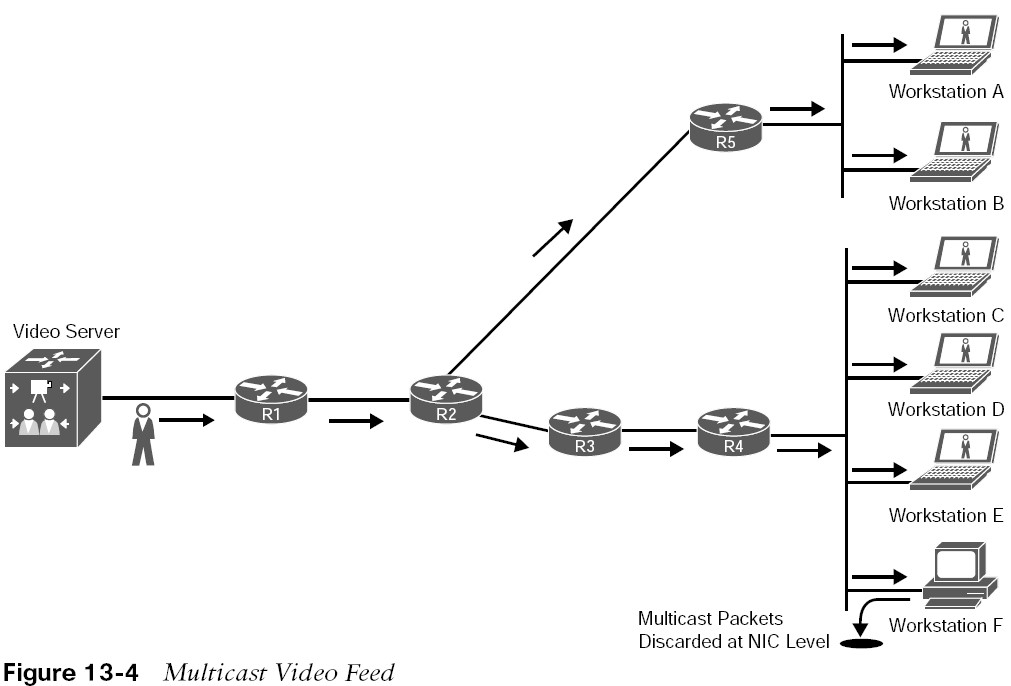
Multicast Fundamentals
describes multicast concepts, as well as the need for multicast.
- Multicast communication is a technology that optimizes network bandwidth utilization and conserves system resources.
- It relies on IGMP for its operation in L2 networks and PIM for its operation in Layer 3 networks.
Multicast Architecture
 IGMP operates between the receivers and the local multicast router and how PIM operates between routers.
IGMP operates between the receivers and the local multicast router and how PIM operates between routers.
Traditional IP Communication
Traditional IP communication between network hosts typically uses one of the following transmission methods:
- Unicast (one-to-one)
- Broadcast (one-to-all)
- Multicast (one-to-many)
Unicast Video Feed
 If each stream is 10Mbps, the network between R1 and R2 needs 50 Mbps. The network R2 and R4 requires 30 Mbps, and the link between R2 and R5 requires 20 Mbps. The server must maintain session state information for all the sessions between the hosts. six workstations are watching the same video that is advertised by a server using unicast traffic (one-to-one).
If each stream is 10Mbps, the network between R1 and R2 needs 50 Mbps. The network R2 and R4 requires 30 Mbps, and the link between R2 and R5 requires 20 Mbps. The server must maintain session state information for all the sessions between the hosts. six workstations are watching the same video that is advertised by a server using unicast traffic (one-to-one).
Broadcast Video Feed
 13-3 shows how the same video stream is transmitted using IP directed broadcasts. The load on the server is reduced because it needs to maintain only one session state rather than many. The same video stream consumes only 10 Mbps of bandwidth on all network links. However, this approach does have disadvantages:
13-3 shows how the same video stream is transmitted using IP directed broadcasts. The load on the server is reduced because it needs to maintain only one session state rather than many. The same video stream consumes only 10 Mbps of bandwidth on all network links. However, this approach does have disadvantages:
- IP directed broadcast functionality is not enabled by default, and enabling it exposes the router to distributed denialof-service (DDoS) attacks.
- Workstation F is processing unwanted packets.
Multicast Video Feed
 Each of the network links consumes only 10 Mbps of bandwidth, as much as with broadcast traffic, but only receivers that are interested in the video stream process the multicast traffic. Workstation F would drop the multicast traffic at the NIC level because it would not be programmed to accept the multicast traffic. Note: Workstation F would not receive any multicast traffic if the switch for that network segment enabled Internet Group Management Protocol (IGMP) snooping, which is covered in a later section.
Each of the network links consumes only 10 Mbps of bandwidth, as much as with broadcast traffic, but only receivers that are interested in the video stream process the multicast traffic. Workstation F would drop the multicast traffic at the NIC level because it would not be programmed to accept the multicast traffic. Note: Workstation F would not receive any multicast traffic if the switch for that network segment enabled Internet Group Management Protocol (IGMP) snooping, which is covered in a later section.
Multicast Traffic
- Multicast traffic provides one-to-many communication, where only one data packet is sent on a link as needed and then is replicated between links as the data forks (splits) on a network device along the multicast distribution tree (MDT).
- The data packets are known as a stream that uses a special destination IP address, known as a group address.
- A server for a stream still manages only one session, and network devices selectively request to receive the stream.
- Recipient devices of a multicast stream are known as receivers.
- Common applications that take advantage of multicast traffic include Cisco TelePresence, real-time video, IPTV, stock tickers, distance learning, video/audio conferencing, music on hold, and gaming.
Other useful information: